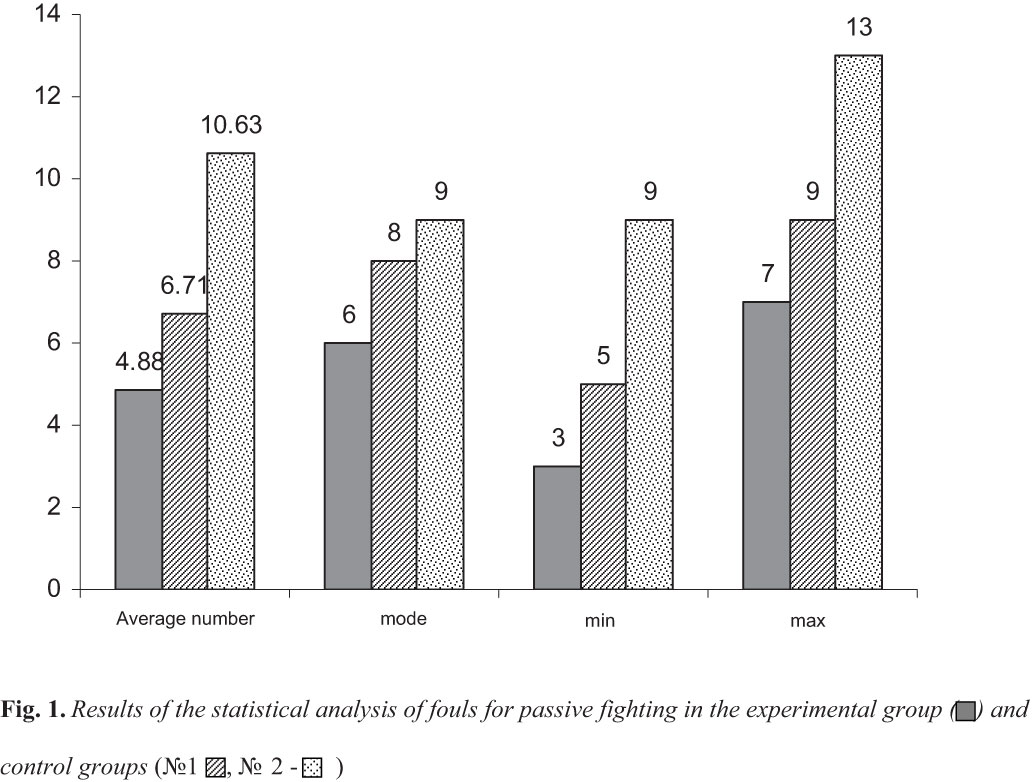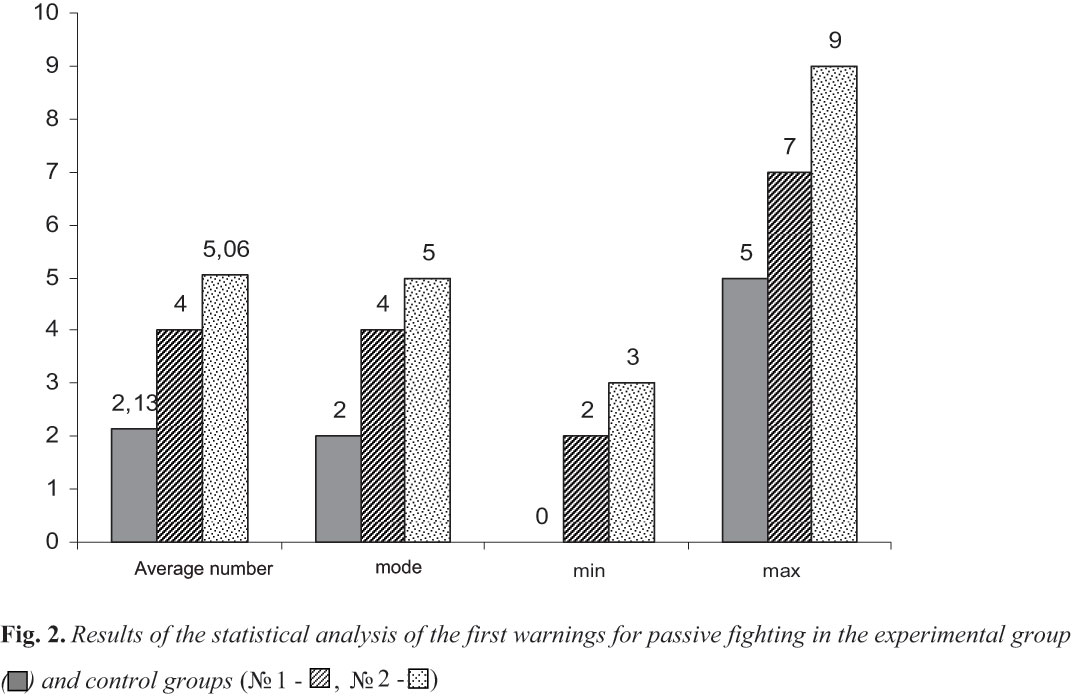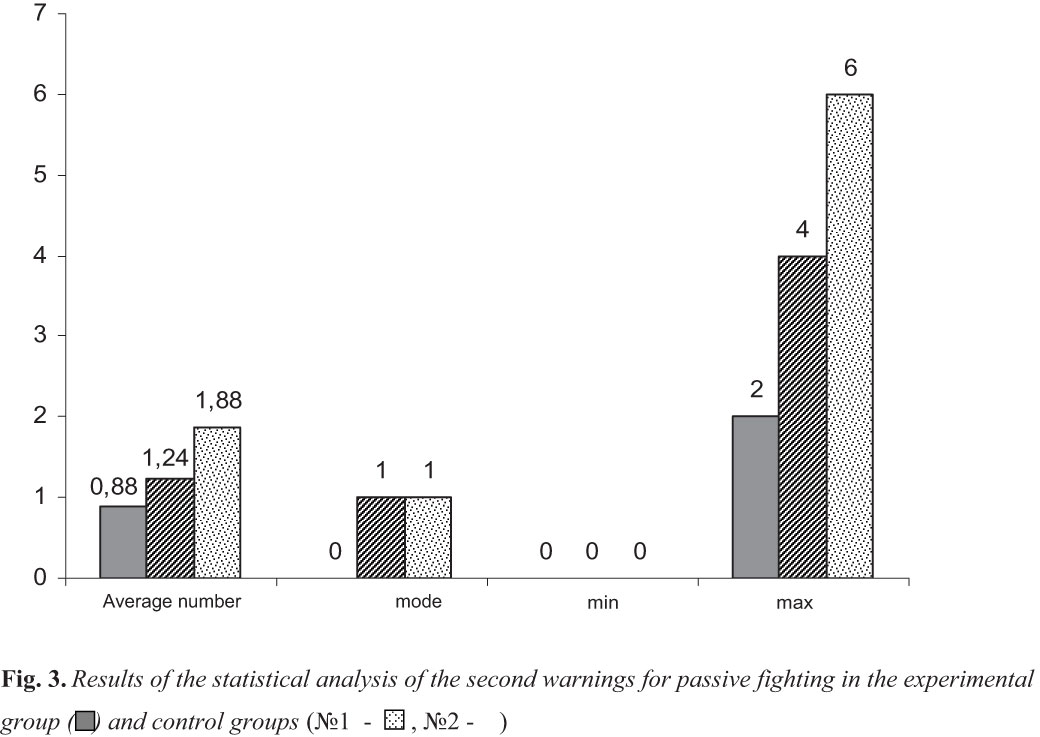Extra Mental Training in Training System of Beginning Sambo Wrestlers
Фотографии:
ˑ:
D.S. Savel'ev, Honorary trainer of Russia
M.V. Murasheva
National Mineral Resources University “Mining”, St. Petersburg
A.G. Levitsky, professor, Dr.Hab.
Lesgaft National state university of physical culture, sport and health, St. Petersburg
D.A. Matveev
St. Petersburg state university, St. Petersburg
Key words: mental training, sambo, rehabilitation.
Numerous works were dedicated to rehabilitation of athletes. They are also intended for elite sport. Thus, university sport, where boys and girls start doing wrestling as soon as they become students, is unfairly forgotten.
Thereby, a methodology of rehabilitation of the contingent of beginning wrestlers is to be designed. Obviously, in this case Olympic or world class achievements are out of the question. In this case the work is to be focused on training of the qualities that could be useful in learning and working activities. This methodology presupposes achieving a certain level of general and special physical fitness.
This program is to be based on mental training, designed and adapted by professor Unestal. The mental training program represents a 6 week course of regular trainings sessions, where each new program is based on the previous ones [1, 2].
Mental training was supplemented by conversations about personal qualities necessary for wrestlers on the example of athletes and trainers of past years. The aspects associated with willpower, desire to win were primarily highlighted in these conversations. The conversations were held at training sessions during a break. Mental training was supplemented with stretching and relaxation exercises.
The purpose of the experiment was to detect the influence of the designed supplemented mental training on the ability to perform a technical action in standing position and on the wrestlers' activity.
Materials and methods. There were taken an experimental group and two control ones (№ 1 and № 2), made of students aged 16-18 years, 15 people each. In the experimental group classes were held according to the program of supplemented mental training. In the control group 1 classes were conducted in accordance with the university curriculum. The ones engaged in it were introduced into mental training, but no conversations were held about the personal qualities desirable for wrestlers;
In the control group 2 classes were conducted in compliance with the university curriculum. The engaged ones were not introduced into mental training, and discussions about personal qualities desirable for wrestlers were not held in it;
Fights according to the rules of sambo were held in each of the groups throughout the year. It was carefully monitored before each fight so that partners were approximately equal in weight, height, physical and technical skills.
Results of bouts were recorded in the protocol and the material was accumulated throughout the year.
Maximum (max), minimum (min), most frequent (moda) number of fouls, the first and the second warnings for passive fighting, obtained by one athlete, average numbers of fouls, the first and the second warnings received by one athlete in each group were determined during processing. The statistical significance of differences between the experimental and the control groups was determined using the Student's t test.
The following table of symbols was used in the data processing: Nfoulexp, N1warnexp, N2warnexp - the total number of fouls, the 1st and the 2nd warnings for passive fighting, respectively, in the experimental group. Nfoulcontr1, N1warncontr1, N2warncontr1 - the total number of fouls, the 1st and the 2nd warnings for passive fighting, respectively, in the control group 1, N2warncontr2 - the total number of 2nd warnings for passive fighting in the control group 1. Nfoulcontr2, N1warncontr2, N2warncontr2 - the total number of fouls, the 1st and the 2nd warnings for passive fighting, respectively, in the control group 2. Р1 - the degree of significance of differences between the average amounts of penalty for passive fighting per one athlete of the experimental and the control group 1, Р2 - the degree of significance of differences between average amounts of penalty for passive fighting per one athlete of the experimental and the control group 2, σfoulexp, σ1warnexp, σ2warnexp – the standard deviation from the average number of fouls, the 1st and the 2nd warnings for passive fighting, respectively, in the experimental group. Σfoulcontr1, σ1warncontr1, σ2warncontr1 – the standard deviation from the average number of fouls, the 1st and the 2nd warnings for passive fighting, respectively, in the control group 1. σfoulcontr2, σ1warncontr2, σ2warncontr2 – the standard deviation from the average number of fouls, the 1st and the 2nd warnings for passive fighting, respectively, in the control group 2.
Results and discussion. Fig. 1 displays the results of the statistical analysis of fouls made for passive fighting in the experimental and in two control groups.
The processing of the data regarding fouls for passive fighting revealed the following values of statistic parameters: Nfoul.exp =78, σfoulexp =1,41, Р1 = 0,1, there were not detected any significant differences for the average number of fouls for passive fighting for one athlete between the experimental group and the control group №2. Nfoulcontr1= 170, σfoulcontr1=1.54. Nfoul.contr2=114, σfoulcontr2=1,50.
According to Fig. 1 and the findings obtained in the statistical analysis of fouls for passive fighting, modes, minimum and maximum amounts of fouls for passive fighting were lower in the experimental group.
Fig. 2 shows the results of the statistical analysis of the first warnings for passive fighting in the experimental group and two control groups.
The processing of the data concerning first warnings for passive fighting revealed the following values of statistical parameters: N1warn.exp, =34, σ1warnexp =1.36. Significant differences for the average amount of first warnings for passive fighting per one athlete between the experimental group and two control groups were not found. N1warncontr1=81, σ1warncontr1= 1.53. N1warn.contr2=68, σ1warncontr2=1.32.


The results of the statistical analysis of the second warnings for passive fighting in the experimental group and two control groups are adduced on Fig. 3.
The processing of the data on the second warnings for passive fighting revealed the following values of the statistical parameters: N2warnexp=14, σ2warnexp =0.81. Significant differences for the average amount of second warnings for passive fighting per athlete between the experimental group and control groups were not found. N2warncontr1=30, σ2warncontr1=1.36. N2warncontr 2 =21, σ2warncontr2=1.09.
Fig. 3 and results of the statistical analysis of the second warnings for passive fighting show that modes, the minimal and the maximal amounts of second warnings were lower in the experimental group.
The experiment resulted in the conclusion that supplemented mental training is good for wrestlers' activity in a bout and effective in decreasing inactivity.

Therefore, supplemented mental training can be recommended to be used in a training process both in sports sections in university conditions and in children's sport clubs and sport schools.
References
- Bundzen, P.V. The system of psychotraining and psychoprophylaxis "Mental training" / P.V. Bundzen, M.A. Bendyukov, A.I. Kiryushin // Vestnik sportivnoy meditsiny Rossii. – 1994. – № 1-4. – P. 35-38. (In Russian)
- Balandin, V.I. Mental training to improve athletes' competitive reliability: recourse book / V.I. Balandin, P.V. Bundzen. – St. Petersburg: Committee on phys. cult. and sport SPb, SPb SRIPhC, 1998. – 27 P. (In Russian)
Corresponding author: Panfilio@spmi.ru



